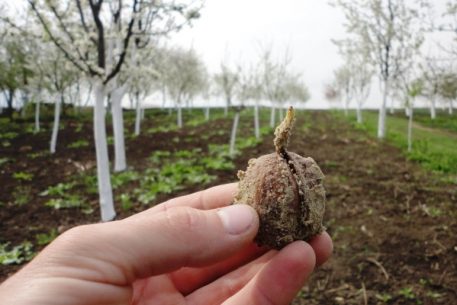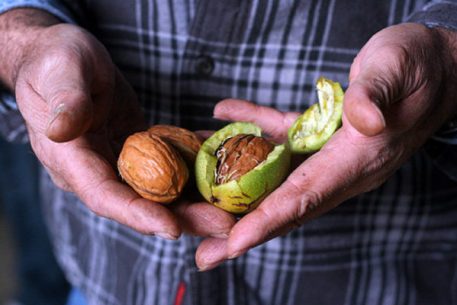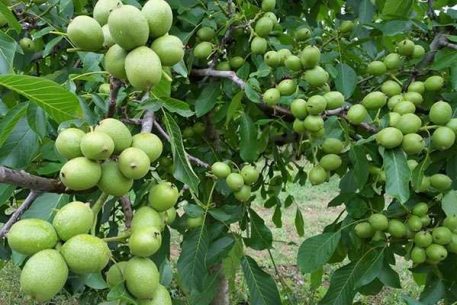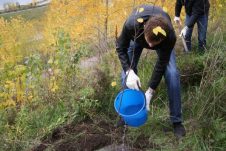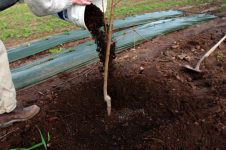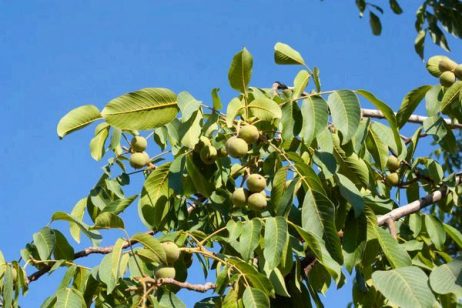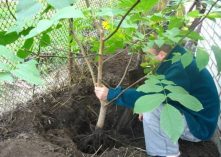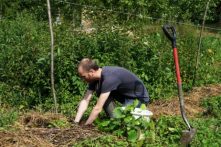Walnut tree is very dense and attractive, it can become a decoration of the site and eventually give a good harvest. In his shadow you can take refuge on a hot day. Grow it from seedlings or seeds. As a seed, the fruit of a nut is taken. The process is not complicated, in comparison with other cultures, walnut is an unpretentious plant. To know how to plant a walnut, you need to familiarize yourself with the material presented.
Material Content:
Selection of planting material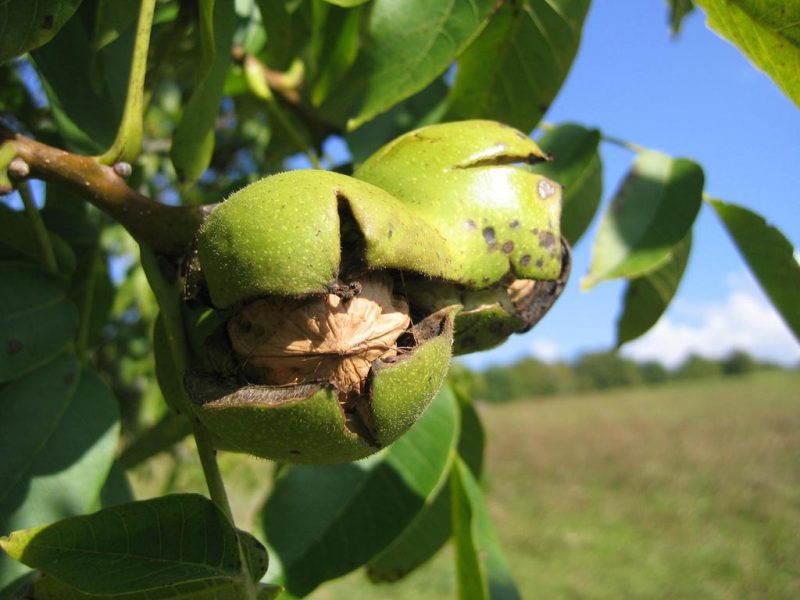
• The fastest way to get a fruiting tree is to plant a seedling. You need to buy it in a trusted place, choose a proven good grade. The seedling must have a strong root and without damage to the trunk.
• If you plan to plant from seeds, you must first purchase the fruits of varietal nuts. The best varieties will be the fruits of a non-"greedy" nut cleaver. From how much better they are, better harvests will be obtained.
• High-yielding varieties are in great demand among gardeners: Dessert, Harvest, Aurora, Dawn of the East, Pelan, State Farm.
Where is it better to plant a walnut on the site
The crown of the tree becomes more spreading over the years, so it needs room. In a small area, it is better not to plant walnut seedlings, since they can not be pruned. Although many gardeners practice pruning, they form a crown. Another condition that will not allow to plant walnut trees in small areas is that the fruits will fall to the ground, they will have to be harvested. There should be no beds or grass under the tree. In addition, other trees do not grow next to the nut, due to its dominant superiority.
Soil requirement
The unpretentious culture does not require special requirements, however, the more fertile the soil, the more comfortable the seedling.
Walnut is best grown on fertile and oxygen-enriched soils with a neutral pH.
To enrich the earth with oxygen, it must first be well loosened (dug). If the soil does not meet the requirements, it is prepared a year before the tree is planted, mixed with fertilizers and calcium humus.
How to plant a walnut from a fruit
1. Collect ripe fruits that have fallen from the tree and dry them thoroughly. You need to do this in a natural way, do not apply high temperatures, otherwise the walnut kernels will not germinate.
2. Dried fruits should be planted in the ground to a depth of about 20 cm. It is not worth planting nuts deeper, as they sprout for a long time.
3. To get 100% germination, put more fruits in the soil, because some of them will rot or not germinate.
4. So that in the future the trees do not interfere with each other, you should plant the fruits at a distance of 4-5 meters. If the germination of fruits is good, when they take root after 2-3 years, they can be transplanted to another place.
5. Sprinkle with soil, water, so as not to lose this place must be noted with a peg.
6. After the emergence of seedlings, tie up by regular watering.
Before the harvest, from the time of planting, 7-10 years will pass. The fruit tree will reach full maturity after 30 years. The fruit of the seedling will be worse than the fruit of the parent tree. For this reason, it is better to plant grafted trees that are of high quality. In this case, the tree will bear fruit in 2-3 years. Knowing how to properly plant a walnut will help to avoid mistakes and get a decent harvest as quickly as possible.
Planting walnut seedlings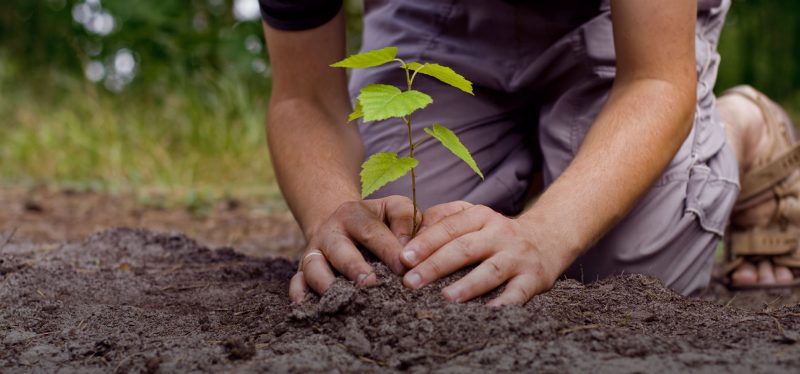
Experienced gardeners know that if you plant a walnut seedling, the tree will give a good growth in the first 2-3 years. Less will be susceptible to disease. For everything to go right, you must adhere to the following rules when planting a seedling:
• It is important to choose the right seedling, it must be strong and well developed.
• To root the tree, you can treat it with a growth stimulator or any other biologically active substance, placing it in the solution for several hours before planting.
• In a prepared place, dig a hole, put drainage from peat or dry leaves on the bottom. Fertilize and water it.
• Install a seedling in the pit, it should be located exactly in the center. It is better to plant a tree together so that one person holds it, and the other bury a hole.
• Top up the soil, for the convenience of watering, leave a hole so that water does not flow.
• First time watering is necessary every 3-5 days, if the summer is dry - more often.
It is best to plant a nut in the fall when coolness comes, but it is necessary before the onset of cold weather so that the seedling grows stronger.
If the seedling is weak, it must be tied to the column with twine, a rigid wire for this purpose can not be taken.
How to care for seedlings
There are no special care instructions if planting was carried out in spring, watering should be done more often.
• For good growth, they fertilize, fertilize and protect against diseases.
• It is necessary to spray the seedling and monitor the condition of the leaves, if signs of disease appear, take urgent measures.
• In order for the root system to develop correctly, it is necessary to enrich the soil with oxygen, to loosen and fertilize.
• If a tree is planted in autumn, it must be protected from freezing. To this end, the tree trunk should be sprinkled with an additional layer of soil, covered with bark, cardboard or hay.
Strong frosts can destroy the seedling, in the spring it will not sprout, die.
Features landing in the suburbs, in the Urals and in Siberia
Despite its popularity, walnuts are not always easy to grow because they love a warm climate and have fairly high soil requirements. Its young shoots, leaves and flowers are very sensitive to spring frosts. Therefore, it is not always possible to grow it in the Urals and Siberia.The tree feels better in the warm corners of the country in sunny places, protected from the wind. He also prefers deeply cultivated soils, moderately moist, rich in humus and nutrients. For cultivation in these places you need to buy weather-resistant varieties.
If you are not too lazy to spend time preparing the soil and choosing a seedling, soon a beautiful tree with a spreading bark will flaunt on the site. Then it remains to wait for the fruits, which are distinguished by their taste and benefits.


